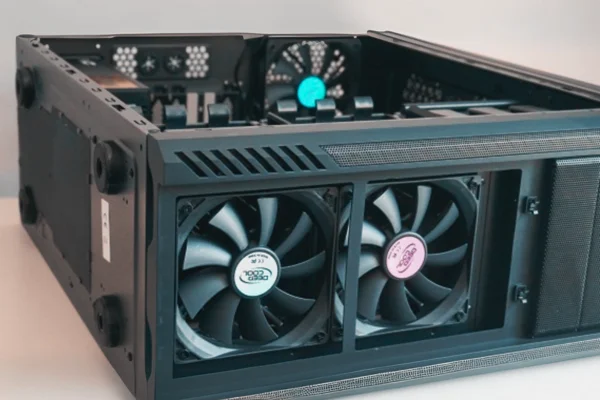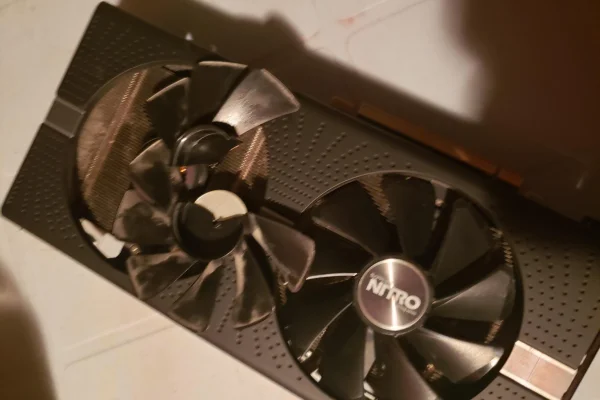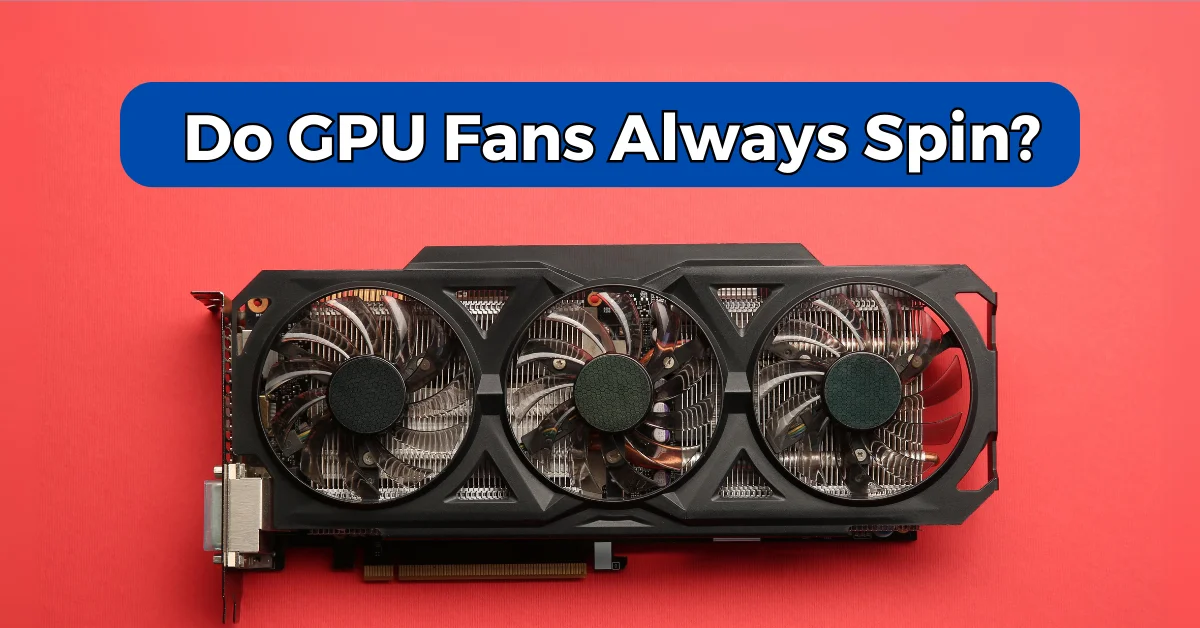Do GPU fans always spin? No. GPU fans are not designed to spin constantly. GPUs typically have built-in systems that keep the fans idle when the card is running cool or performing light tasks.
The GPU fans only start spinning when the temperature reaches a certain threshold, which helps conserve energy and extend the lifespan of the fans. If your GPU fans are constantly spinning, it may indicate high temperatures or other performance issues.
So, if you want to know when fans typically spin, and why they might not, you’ll love this guide.
Let’s dive in.
When Do GPU Fans Start Spinning?
First things first: GPU fans don’t spin constantly. Modern graphics cards are designed with efficiency in mind, balancing performance with power consumption and noise levels.

Several factors trigger fan activation.
- Idle state: When your GPU isn’t under load, fans often remain still to save energy and reduce wear.
- Temperature threshold: Most GPUs start spinning their fans when they reach about 50-60°C (122-140°F).
- Load-based activation: Intensive tasks like gaming or video rendering cause your GPU to heat up, triggering fan activation.
- Ambient temperature influence: Higher room temperatures may cause fans to activate sooner or spin faster.
What Might Cause the GPU Fans to Always Spin?
When GPU fans are constantly spinning, it could be a sign of underlying issues or specific factors that force them to stay active. Here are several potential causes that could lead to this behavior:
- High or Unstable Temperatures
- Aggressive Fan Curve Settings
- Background Processes Utilizing GPU Resources
- Overclocking
- IOS or Driver Issues
- Zero RPM Mode Malfunction
- Power Supply Issues
Reasons Why GPU Fans May Not Always Spin
Don’t panic if you notice your GPU fans aren’t spinning. There are several legitimate reasons for this:
Temperature Thresholds
Most GPUs are designed to operate within specific temperature ranges. Fans may not spin until the GPU reaches a certain temperature threshold, typically around 60°C or higher. If the GPU is running cool, the fans may remain off to reduce noise and power consumption.
Power Supply Issues

Insufficient power supply can prevent GPU fans from spinning. If the GPU is not receiving adequate power, either due to a faulty power supply unit (PSU) or incorrect connections, the fans may fail to operate. Ensuring that the PSU meets the power requirements of the GPU is essential.
Fan Control Settings
Many modern GPUs come with software that allows users to control fan speeds. If the fan control settings are configured to operate in a silent mode or if the software is malfunctioning, the fans may not spin when needed.
Physical Obstructions

Dust accumulation or physical obstructions can hinder the movement of GPU fans. Over time, dust can build up inside the GPU, preventing the fans from spinning freely. Regular cleaning and maintenance can help ensure that fans operate smoothly.
Faulty Fans

Like any mechanical component, GPU fans can fail. A defective fan may not spin at all, even when the GPU is under load. If other troubleshooting steps do not resolve the issue, testing the fans or replacing them may be necessary.
Driver Issues
Outdated or corrupted GPU drivers can lead to improper fan operation. Ensuring that the drivers are up-to-date can help in resolving any software-related issues that might affect fan performance.
BIOS Settings
In some cases, BIOS settings can influence fan operation. Certain settings may disable fan control or set thresholds that prevent fans from spinning. Accessing the BIOS and checking fan control settings can provide insights into whether this is the cause.
Manual Control of GPU Fans
If you’re dealing with fluctuating temperatures or just want to optimize your GPU cooling for specific tasks, manually controlling the fan speed can be a game-changer. Luckily, most modern GPUs come with tools that let you override automatic fan controls, so you can dial in the settings that work best for you.
So, how can you manually control GPU fans? Let’s dive in.
1. Using GPU Manufacturer Software
The easiest way to manually adjust your GPU fans is through the software provided by the manufacturer. These tools are designed to work seamlessly with your hardware, and they’re beginner-friendly. Some popular options include:
- NVIDIA Control Panel: It might be basic, but you can still tweak the fan speed settings here.
- AMD Radeon Software: This tool gives you the option to set custom fan curves, letting you control how the fans ramp up based on temperature.
- MSI Dragon Center: If you have an MSI GPU, this software lets you adjust fan speeds in real time and create custom profiles.
These tools are a great starting point, especially if you’re new to tweaking fan speeds. They minimize the risk of causing any issues since they work directly with your GPU’s firmware.
2. Third-Party Fan Control Software
Looking for more control? Third-party software like MSI Afterburner, EVGA Precision X1, or SpeedFan offers detailed tuning options. Here’s why you might want to go this route:
- Custom fan curves: Want the fans to start spinning at 40% when the GPU hits 50°C? No problem. These tools let you set precise triggers for fan speeds based on temperature, optimizing cooling without adding too much noise.
- Fixed fan speeds: Prefer a consistent fan speed regardless of GPU load? You can lock the fans at a constant RPM, whether it’s 50% for quiet operation or 100% when you need maximum cooling during gaming or rendering.
- Performance monitoring: These tools offer real-time data on GPU temperature, fan speed, and more, helping you adjust your settings based on actual performance.
For those looking to really fine-tune their system, third-party tools provide more flexibility than manufacturer software.
3. BIOS-Level Fan Control
If you want to go deeper, BIOS-level control might be the next step. This involves using tools like TechPowerUp’s GPU-Z or flashing a custom BIOS to manually adjust fan curves directly in the firmware.
But, a word of caution: this approach is more advanced, and tampering with the BIOS can void warranties or cause permanent damage if done incorrectly. Only attempt this if you’re confident in your technical skills and understand the risks.
When to Consider Always-On Fans
While not typically recommended, there are scenarios where you might want your fans always spinning:
Overclocking: If you’re pushing your GPU to its limits, constant cooling might be necessary.
Mining operations: Cryptocurrency miners often prefer constant fan operation for consistent temperatures.
Extreme ambient temperatures: In very hot environments, always-on fans might be needed to prevent thermal throttling.
Troubleshooting Non-Spinning Fans
If your GPU fans aren’t spinning when they should be, try these steps:
- Check connections: Ensure your GPU is properly seated and all power cables are connected.
- Update drivers: Outdated or corrupted drivers can cause fan issues.
- Clean your GPU: Dust can prevent fans from spinning freely.
- Monitor temperatures: Use software like HWMonitor to check if your GPU is actually getting hot enough to need fan cooling.
- Test fan functionality: Some GPUs allow you to manually set fan speed to 100% for testing purposes.
Bottom Line
GPU fans are designed to spin only when necessary, balancing cooling needs with efficiency and noise reduction. While constantly spinning fans aren’t typical, they’re not always a sign of trouble. By understanding your GPU’s cooling behavior and knowing how to troubleshoot issues, you can ensure your graphics card stays cool and performs at its best.

